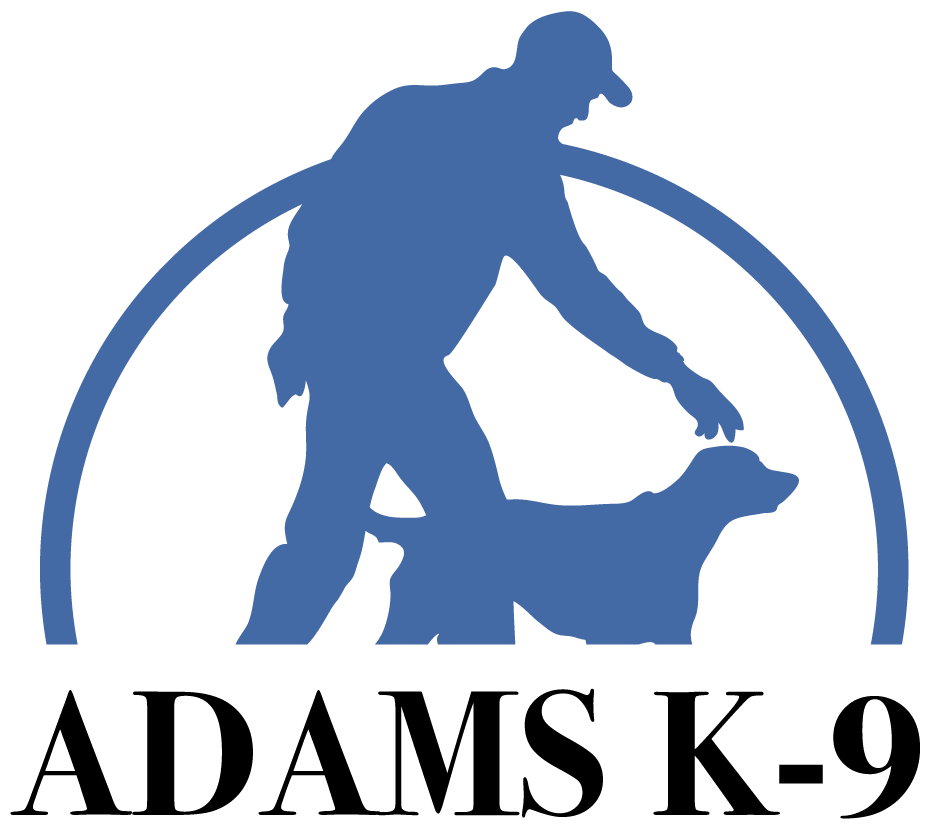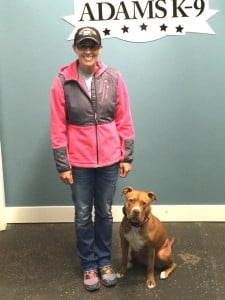Socialize – Socialization is more than introducing your dog to strangers and dogs. It begins when they are 1 week old. Learning about being a dog at a very young age is very important. Dogs need to learn to speak dog. Those that do not learn these lessons as a youngster have issues in adult life. Most of the dogs that board at our facility have some form of reactivity around dogs. The ones that are social, which is very few, have extra free time with our day care dogs. Sign your puppy up for puppy class so they can learn how to behave around dogs. Environmental socialization is also instrumental. Introduce your dog to multiple surfaces, steps, and sounds. I introduce my dogs to gun fire and I have never owned a dog fearful of thunder. Use blanks play with your dog as someone discharges the blank pistol from 100 yards away. Gradually work closer to the dog. As the gun fires the blanks play fetch, feed or play with your dog. Those loud sounds should be pared with fun. If you want a confident well balanced dog, socialization is the very first step.
9. Lead the dog, Don’t let the dog Lead you – If you want to know who is in charge and making the rules, watch people and their dogs. The dogs that are the leaders are the leash pullers, nuisance barkers, jumping, nipping and running away pooches. Every dog should have a job and the job should be manners and obedience. They must work for a treat, stay off the furniture, come when they are called and not pester the guests. Work before play should be your motto. Teach your dog to wait at the door. Waiting teaches control. Once they know the wait command, next is the release command. I use the word “free” because we do not use “free” in our everyday language. Many use “Okay” but we say “Okay” a lot and that is the reason I prefer free.
8. One thing at a time – Only work on one thing at a time. If you want to practice sit, that is it. Don’t worry about down, stop jumping or walking nice on a leash. Sit is probably one of the first things puppies learn. Next teach down, then come, and so on. If your dog is having an issue with the release command, don’t practice other things, just work on the release. As the dog learns and progresses add commands to his repertoire
7. Leash is the #1 training tool – If you are having control issues keep your dog on a leash. If he doesn’t obey with a leash on he certainly isn’t going to listen without. I suggest to all my clients to condition your dog at a young age to drag a leash around in the house and out. As the dog matures, have the drag a long line around in the yard. Come does not mean chase me. Say, come and use the leash to encourage to come to you. You can also step on the leash if the dog attempts to run away. Dogs love the chase and be chased but that is the game for dogs, not people and dog. Dogs are faster than us and we always loose that game.
6. Food is the primary reinforcer – Train with your dog when they are hungry. I have a friend who uses his dog’s kibble to teach behavior. Most people put the bowl of food down on the floor and let the dog chow it down. My friend feeds each individual kibble to the dog. It takes about a half hour, but the dog is very motivated to eat and he learns obedience as he eats. Heel, sit, down, come all can be trained with food. I have had people tell me their dog isn’t food motivated. Let him miss a meal and the dog will be motivated. I have never owned a dog that did not eat when I told him to eat. As long as you don’t overfeed and spoil your dog they should be motivated by food.
5. Consistency – Dogs do not do gray areas. They love rules and want consistency. You cannot let the dog on the couch and then get mad at him because he won’t stay off the couch. If you tell your dog to down, he/she must down. If he/she is permitted to refuse a command, they will down when the feel like it and walk away when they don’t. If you are not consistent with your training do not expect your dog to come when a dog walker passes your home and your dog wants to chase down the street after them. Lack of control is lack of consistency.
4. Persistence – Persistence is ongoing, never ending training. You must work with your dog throughout the day, not just during your 20 minute training session you set aside for the day. Training is throughout the life of the dog. There are always going to be times during the day when you will need to interrupt behavior and re-direct. I do when ever my dog sees the kitty or mail man. Training is a life time investment.
3. End training with the dog wanting more – Work your dog until they peak, but still wanting more. As long as your dog is into it and motivated, you can work him/her. At our facility towards the end of the first week the dog is whining before they arrive and runs to the door leading to our training room and sits. They are motivated to get started because we don’t over work them. They always leave wanting more.
2. Always end on a good note – When training with your dog end on a win, win for the dog. If you are working on a new command or behavior and they are becoming frustrated go to something they know. For instance my dog knows how to shake. So, tell your dog to shake and reward with a treat. Shake is something they already know and can get a quick reward. Learning new behaviors is stressful. When I learned to repel off the side of a tower it was stressful, when you change jobs it is stressful, and when your dog learns a new command that is also stressful. Once they get it, it becomes fun. Dogs love performing, once they get it.
1. Stay Calm and Be Happy – If you are having a bad day, are grumpy or getting frustrated with your dog do not train. Dogs are experts at reading our emotions. I know my wife doesn’t want to be around me if I’m grumpy and neither do my dogs. If you had a bad day at work skip a day of training. It’s better to skip a day than regress because your dog didn’t have any fun with you because you were not into it. Dogs a great companions and want to please. Have fun with your dog, reward with food, toys and praise and you will have a happy stress free life with your dog.


